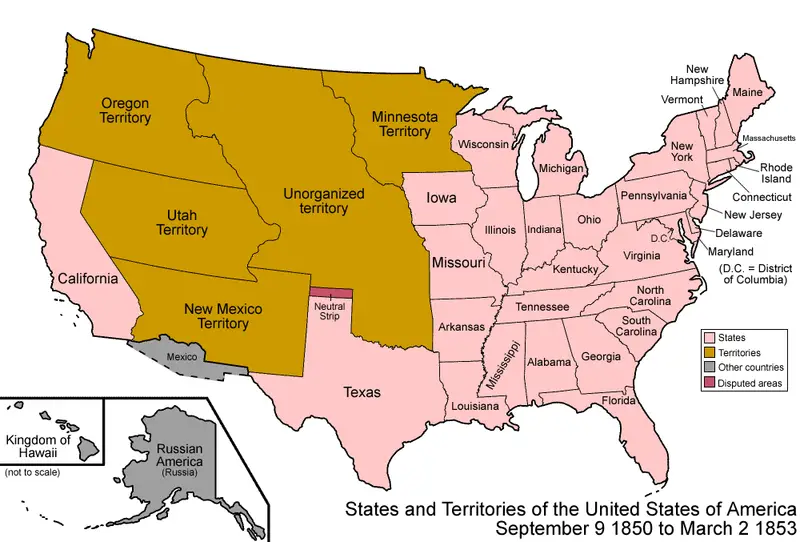Freedom in the North?
During the 1800s, slavery was widely accepted in the southern states of America.
Although many slaves escaped and made their way north, Congress had put laws in place with the Compromise of 1850 that required people in all states to recapture and return these slaves.
Some Black Americans in the north were considered to be free, having arrived on their own, bought their way to freedom, or were set free by their white owners.
So even if a Black American was free in the northern states, it wasn’t always safe for them.
- An important thing to remember is that even if a Black American was listed as “free” they didn’t have the same rights in many places as white Americans. Some states had passed laws forbidding the education of Black Americans and they weren’t allowed to own weapons. If a free Black American was accused of being a slave, in some locations they couldn’t even defend themselves in court.
- One of the places that many free blacks turned to was the church. A major shift in the north for Black Americans was when they established the African Methodist Episcopal Church. The popularity and leadership quickly spread from northern areas such as Philadelphia to some of the southern cities. The church and its members suffered violent attacks and a lot of the leaders eventually became some of the abolitionists seeking freedom for all Black Americans. The church united the Black people in a way that nothing else of the time had done.
- There were centers in the north that allowed free blacks to be educated and develop trades and skills. Many were writers, musicians, tailors, cooks, hairdressers, and inventors. Some created inventions that offered technology and science advancements and others even owned properties and had boarding houses. A large percentage of those Black Americans that had the most talents relocated from the restrictive southern states to the north.
- Many of the freed Black Americans preferred living in the cities because they had access to better social and economic conditions. Those that lived in the Boston area were able to get better and more formal educations. Many of those that were educated began “literary societies” so that they could freely share books with other Black Americans.
- Free Black American women had less opportunities than the men. Most Black females of all ages were limited to domestic work including cooks, seamstresses, cleaning women and nannies, while the boys could become apprentices for trades such as carpenters and blacksmiths. The highest paid position for Black females was in teaching. There were areas of the north that had an increase in Black women as economic partners to their husbands.
- The laws that were set in place by Congress didn’t protect any Black American in the north. It was difficult for them to prove that they were free and any white slave owner that showed up could claim that they were escaped slaves and they were given as property to the white slave owner. Even free Black Americans had limited rights and when they pursued their freedom in the court of law the results often favored the slave owners. In cases of mixed race heritage, some women could claim their freedom and it was granted.

The United States after the Compromise of 1850
Q&A:
What did the Compromise of 1850 require people to do with escaped slaves?
Required people in all states to recapture and return these slaves
What was the name of the organizations established by free Black Americans to share books?
Literary Societies
What religious organization increased the power of free Black Americans?
African Methodist Episcopal Church
What were some of the trades that free Black American men and women could have?
Writers, musicians, tailors, cooks, hairdressers, and inventors/ cooks, seamstresses, cleaning women and nannies, carpenters and blacksmiths
What condition could a freed Black American female win her freedom in court?
If she was of mixed race
What was the highest paid position that a Black American woman could have in the 1800s?
Teacher



